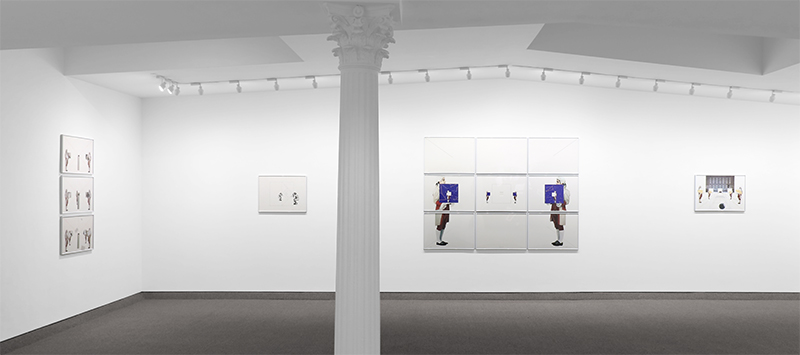
“The attention is analytical, but the result is enigmatic.”
—Giulio Paolini
Krakow Witkin Gallery proudly announces Giulio Paolini’s first solo exhibition in Boston. Long associated with “Arte Povera” and primarily known for his installations, Paolini has a deep history of working in two dimensions, giving the gallery the opportunity to show a broad and deep range of editions. At first glance, the prints look similar to installations one may have seen in museums. One could assume the prints are reproductions – however, while the elements and themes are related to these large projects, the works on paper are particular to the reality of two dimensions and thus create different and significant experiences for a viewer. This exhibition’s goal is to provide a broader understanding of Paolini’s specific gestures for his prints.
To begin with, it is relevant to know that Paolini has a deep history with paper. His father worked for the Italian Institute of Graphic Arts and his mother was a school teacher. He attended the Giambattista Bodoni State Industrial Technical Institute for Graphic and Photographic Arts and graduated in 1959. He subsequently worked in graphic design and advertising. Design, legibility and the function of image form the basis of his education and early professional experiences.
Paolini’s first solo exhibition, at La Salita in Rome in 1964, consisted of raw wood panels hung on, or leaning against, walls, giving the gallery the appearance of being in the midst of a show being hung. Ever since this project, Paolini has explored issues of control and comprehension using appropriation, collage and perspective. Space is doubled, fragmented and open-ended. He balances between centrifugal and centripetal forces where the outside comes in, the inside moves out and hierarchy is always in question. His use of reference is made plain, not just to clarify a meaning behind the reference, but also to acknowledge and focus on the idea of “reference” as a forever-morphing aspect of life. Motion (or the lack thereof), time and space are all equally important to the artist and his work. He has always created a balance between the hand of the author and the eye of the observer with, as Maddalena Disch has described, a “theater of evocation” as the result.
Giulio Paolini lives and works in Turin, Italy. Major solo exhibitions include the Fondazione Carriero, Milan, Italy (2018); Center for Italian Modern Art, New York City, NY, USA (2016); Whitechapel Gallery, London, UK (2014); MACRO Museo d’arte contemporanea Roma, Rome, Italy (2013); Accademia di Belle Arti di Brera, Milan, Italy (2010); Museo Archeologico Nazionale di Napoli, Naples, Italy (2009); Kunstmuseum Winthertur, Switzerland (2005); Museo d’arte moderna e contemporanea di Trento e Rovereto, Rovereto, Italy (2004); Museo D’Arte Contemporanea, Castello di Rivoli, Turin, Italy (1999); Galleria Nazionale d’Arte Moderna, Rome, Italy (1988); and The Solomon R. Guggenheim Museum, New York, NY, USA (1985). He has also participated in numerous group exhibitions, including Fondazione Prada, Milan, Italy (2018); State Hermitage Museum, St Petersburg, Russia (2018); Serralves Museum of Contemporary Art, Porto, Portugal (2016); Centre Pompidou, Paris, France (2015); Musée d’Orsay, Paris, France (2013); and The Art Institute of Chicago, Chicago, IL, USA (2012). His work has been included in many editions of the Venice Biennale, Italy (2013, 2011, 1997, 1995, 1993, 1986, 1984, 1980, 1978, 1976, 1970) and ‘documenta’, Kassel, Germany (1982, 1977, 1972). His work features in numerous international public and private collections, including Tate Collection, London, UK; San Francisco Museum of Modern Art, CA, USA; Solomon R. Guggenheim Museum, New York, NY, USA; The Art Institute, Chicago, IL, USA; Stedelijk Museum, Amsterdam, The Netherlands; Nationalgalerie, Berlin, Germany; Galleria nazionale d’arte moderna e contemporanea, Rome, Italy; and Musée d’Art Moderne, Brussels, Belgium.
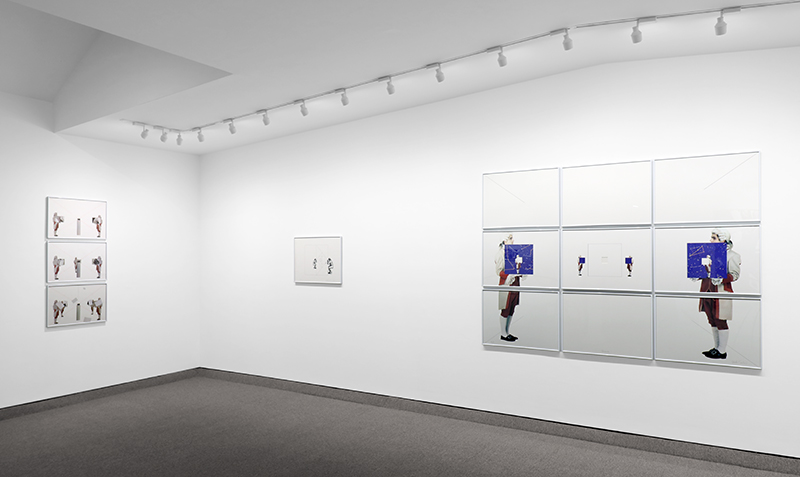
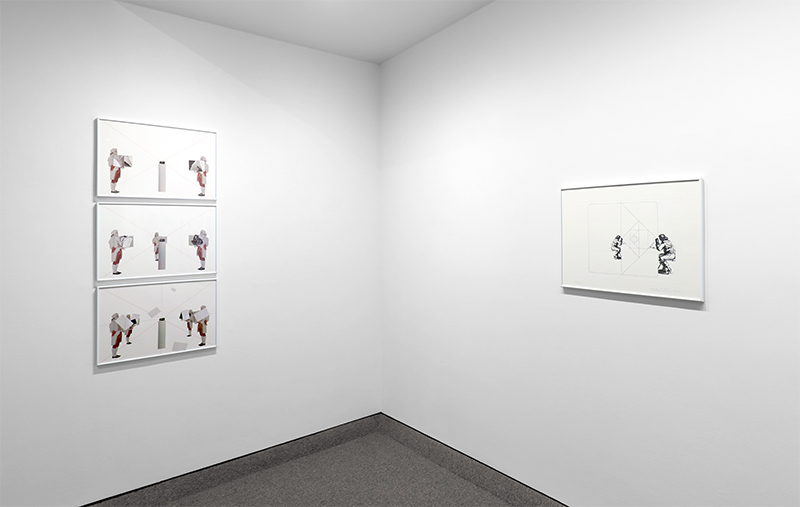
Image/paper size: 15 7/8 x 23 3/4 inches each (40.3 x 60.3 cm each)
Edition of 90
Signed and numbered on sheet three in graphite on reverse
(Inventory #28381)
Image/paper size: 15 7/8 x 23 3/4 inches each (40.3 x 60.3 cm each)
Edition of 90
Signed and numbered on sheet three in graphite on reverse
(Inventory #28381)
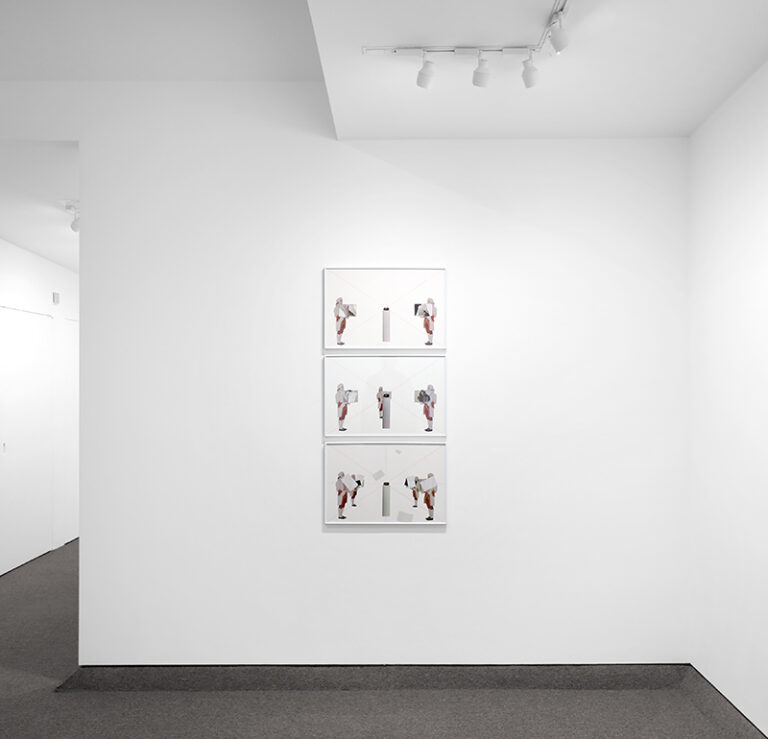
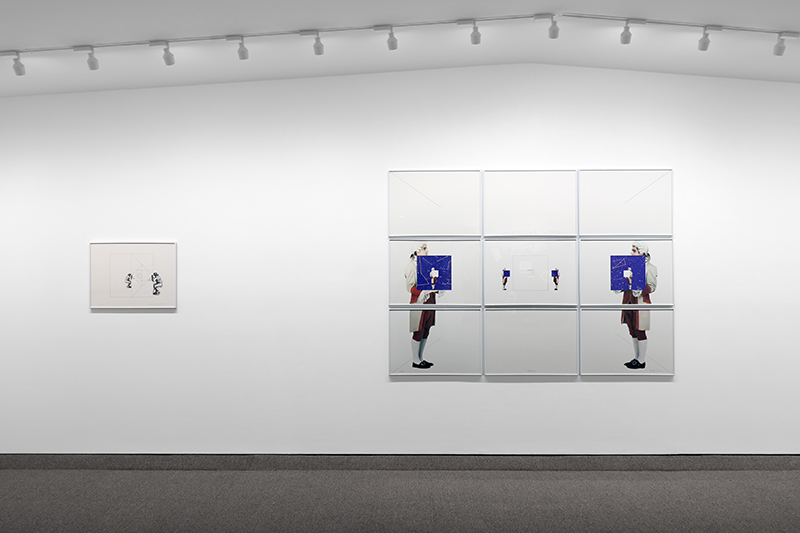
Image/plate size: 13 3/4 x 19 3/4 inches (34.9 x 50.2 cm)
Paper size: 19 5/8 x 27 1/2 inches (50 x 70 cm)
Edition of 70, AP
Signed lower right and numbered lower left in graphite
(Inventory #35484)
Image/plate size: 13 3/4 x 19 3/4 inches (34.9 x 50.2 cm)
Paper size: 19 5/8 x 27 1/2 inches (50 x 70 cm)
Edition of 70, AP
Signed lower right and numbered lower left in graphite
(Inventory #35484)
Overall arrangement size (approximately): 59 x 82 5/8 inches (150 x 210 cm)
Image/paper size (each): 19 3/4 x 27 1/2 inches (50 x 70 cm)
Edition of 60
Signed lower right (bottom right sheet); titled lower center (bottom center sheet); numbered lower left (bottom left sheet)
(Inventory #29298)
Overall arrangement size (approximately): 59 x 82 5/8 inches (150 x 210 cm)
Image/paper size (each): 19 3/4 x 27 1/2 inches (50 x 70 cm)
Edition of 60
Signed lower right (bottom right sheet); titled lower center (bottom center sheet); numbered lower left (bottom left sheet)
(Inventory #29298)
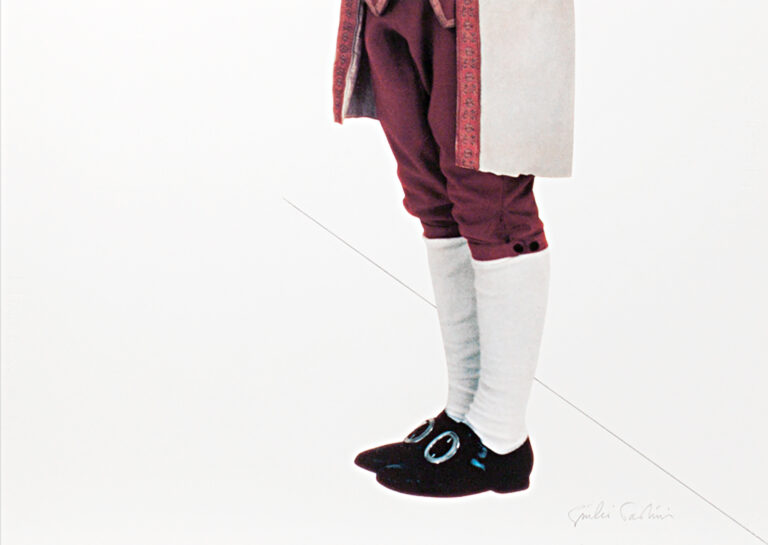
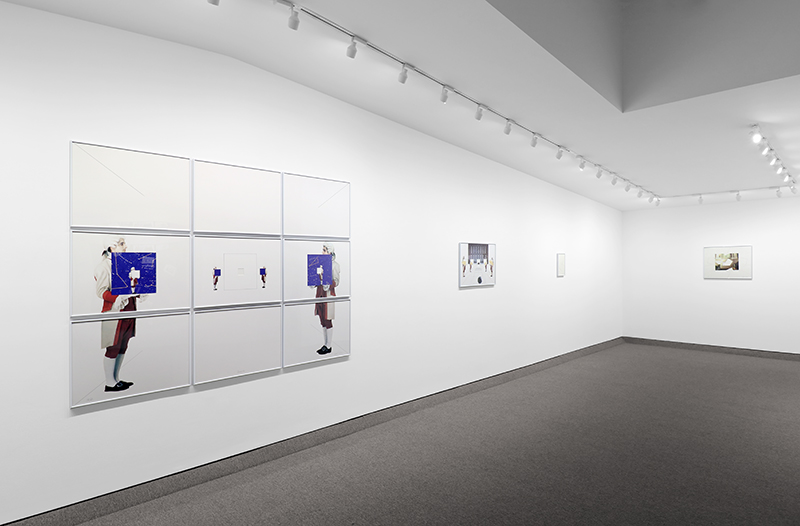
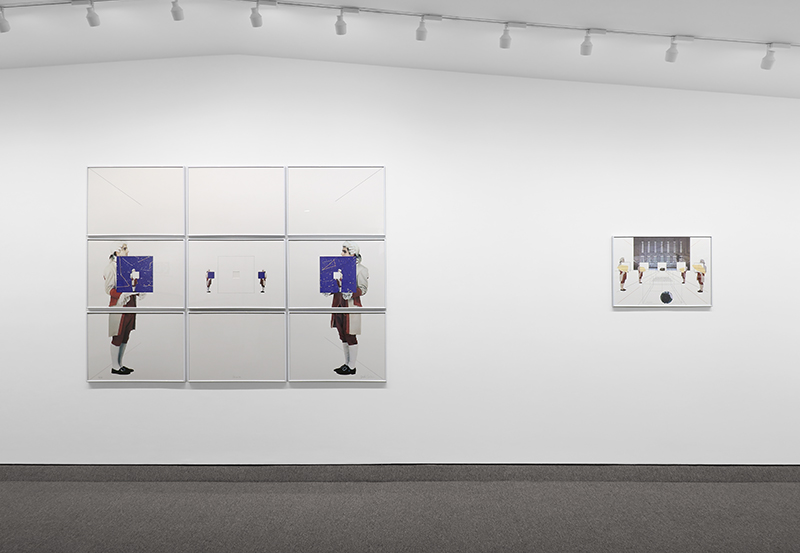
Image/paper size: 19 3/4 x 27 1/2 inches (50 x 70 cm)
Edition of 100
Signed and numbered bottom center in graphite
(Inventory #30646)
Image/paper size: 19 3/4 x 27 1/2 inches (50 x 70 cm)
Edition of 100
Signed and numbered bottom center in graphite
(Inventory #30646)
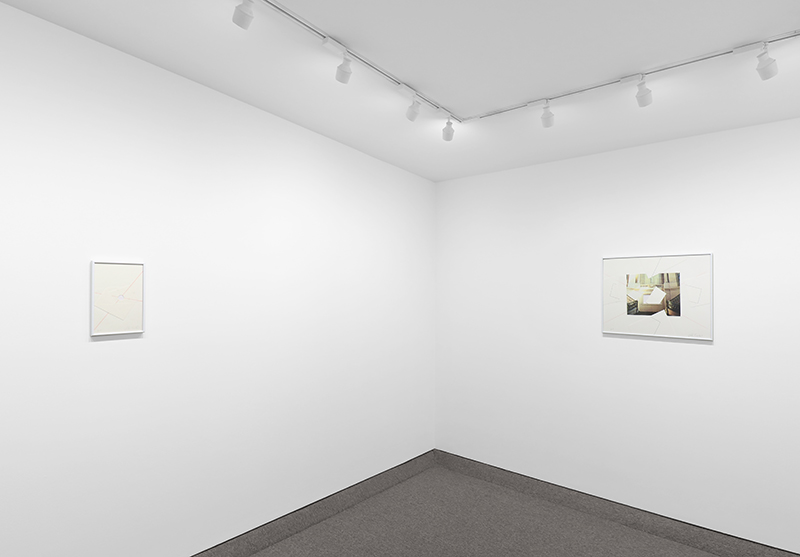
Image/paper size: 13 x 8 1/4 inches (33 x 21 cm)
Edition of 120, AP
Signed lower right and numbered lower left in graphite
(Inventory #30647)
Image/paper size: 13 x 8 1/4 inches (33 x 21 cm)
Edition of 120, AP
Signed lower right and numbered lower left in graphite
(Inventory #30647)
Image/paper size: 19 3/4 x 27 1/2 inches (50 x 70 cm)
Edition of 150, AP
Signed lower right and numbered lower left in graphite
(Inventory #30648)
Image/paper size: 19 3/4 x 27 1/2 inches (50 x 70 cm)
Edition of 150, AP
Signed lower right and numbered lower left in graphite
(Inventory #30648)
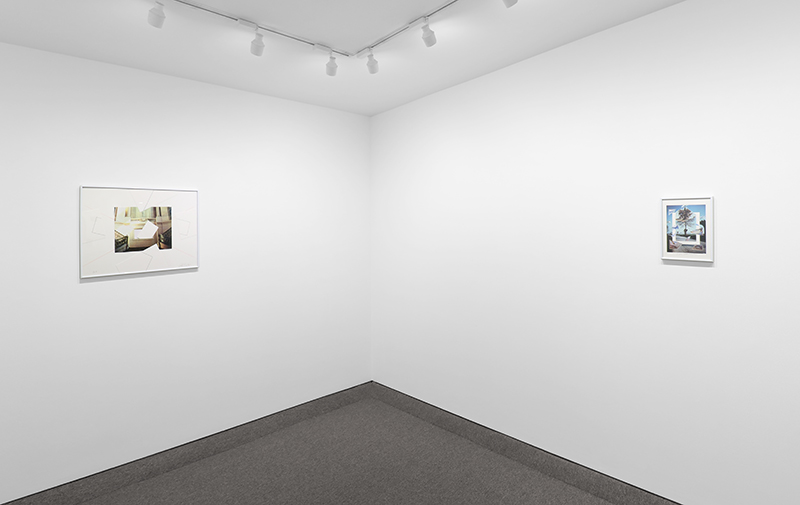
Image size: 9 3/8 x 6 5/8 inches (23.8 x 16.8 cm)
Paper size: 11 3/4 x 8 1/4 inches (29.8 x 21 cm)
Edition of 10
Signed and numbered lower center in graphite
(Inventory #30650)
Image size: 9 3/8 x 6 5/8 inches (23.8 x 16.8 cm)
Paper size: 11 3/4 x 8 1/4 inches (29.8 x 21 cm)
Edition of 10
Signed and numbered lower center in graphite
(Inventory #30650)
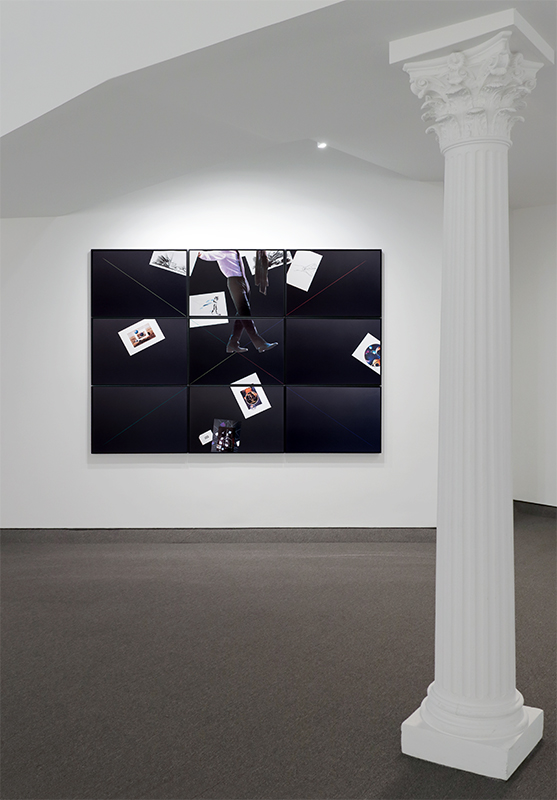
Overall arrangement size (approximately): 59 x 82 3/4 inches (150 x 210 cm)
Image/paper size (each): 19 3/4 x 27 1/2 inches (50 x 70 cm)
Edition of 30
Signed and numbered in graphite on bottom center sheet. Title is printed in black ink on bottom center sheet around signature and edition information
(Inventory #29733)
Overall arrangement size (approximately): 59 x 82 3/4 inches (150 x 210 cm)
Image/paper size (each): 19 3/4 x 27 1/2 inches (50 x 70 cm)
Edition of 30
Signed and numbered in graphite on bottom center sheet. Title is printed in black ink on bottom center sheet around signature and edition information
(Inventory #29733)


Image/paper size: 13 3/4 x 19 3/4 inches (35 x 50 cm)
Edition of 100, AP
Signed and numbered lower center in graphite
(Inventory #30651)
Image/paper size: 13 3/4 x 19 3/4 inches (35 x 50 cm)
Edition of 100, AP
Signed and numbered lower center in graphite
(Inventory #30651)
No results found.
10 Newbury Street, Boston, Massachusetts 02116
617-262-4490 | info@krakowwitkingallery.com
The gallery is free and open to the public. Please note our summer schedule:
June
Tuesday – Saturday, 10–5:30
(Open on Juneteenth)
July 1–25
Tuesday – Friday, 10–5:30
(Closed Friday, July 4)
July 29 – September 1
Open via appointment
Beginning September 2
Tuesday – Saturday, 10–5:30